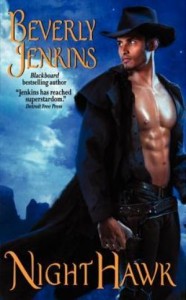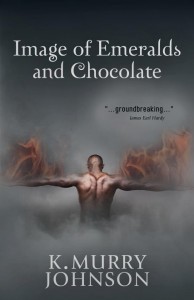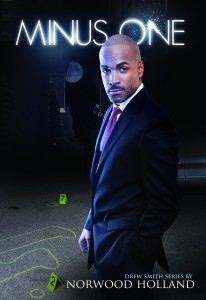Marcus Samuelsson regales crowd at the Smithsonian
July 29, 2012
 The Smithsonian’s National Museum of African Art’s second program in the Director’s Discussion Series featured Chef Marcus Samuelsson in a discussion of his memoir, Yes, Chef lead by Dr. Johnnetta Betsch Cole. The discussion was introduced by Michele Martin, host of NPR’s Tell Me More. Dr. Cole began by setting out the parameters of their talk addressing the Chef’s life, his work, his passion for food and his view of food as art.
The Smithsonian’s National Museum of African Art’s second program in the Director’s Discussion Series featured Chef Marcus Samuelsson in a discussion of his memoir, Yes, Chef lead by Dr. Johnnetta Betsch Cole. The discussion was introduced by Michele Martin, host of NPR’s Tell Me More. Dr. Cole began by setting out the parameters of their talk addressing the Chef’s life, his work, his passion for food and his view of food as art.
Samuelsson has made his mark in the competitive restaurant world. He is an internationally acclaimed chef, philanthropist and a New York Times best-selling author. He is the youngest chef to achieve two three-star reviews from the New York Times and has been honored by the James Beard Foundation on multiple occasions, including “Rising Star Chef” (1999), “Best Chef: New York City” (2003), “Best International Cookbook” (2007) and “Best Television Program” (for Chopped in 2012). The author of several award-winning cookbooks, Samuelsson released his best-selling memoir, Yes, Chef, in June.
Speaking to a packed auditorium the celebrity chef recounted his remarkable journey of a tubercular three year old orphan and adopted by a Swedish couple. Born in Ethiopia, raised in Sweden, classically trained in Europe and landing in America where he fully embraces the African-American experience. Attributing his success to a combination of random luck, a work ethic and faith it was during those formative years his Swedish dad provided fundamental instruction necessarily acquired by successful people of color, i.e., your knife must be sharper than the others. As a man of color seeking opportunity and access he couldn’t settle on just being good but strive toward being the best.
The chef spoke on how to this day he sees himself more of a failed soccer player than an accomplished chef. While soccer may have been his first love he ultimately focused on the craft of cooking and for good cause rising up through the ranks of his chosen profession he tells of the stress of coping and overcoming countless challenges. Launching his career Samuelsson writes “I had to get to France, anyone who wanted to know greatness had to go to France. Yeah, I found French food too heavy and rigid and fussy sometimes, with technique overshadowing flavor, but there was no question that it embodied excellence, history, and craft—three qualities that appealed to me. Plus, I needed that pedigree in my pocket.”
Not only did he conquer France but took on other rigorous challenges including a cruise ship stint with no days off. With commitment, discipline, and fortitude he anchored in New York fulfilling a dream of his own restaurant in Harlem, the Red Rooster. Addressing the adoring crowd and much like his memoir Marcus Samuelsson was engaging, expressive and frank. He touched on such themes as eating with a spiritual compass, the significant narrative of Black cooks, and mystical Harlem. Inspired by the artists of the Harlem Renaissance the Chef spoke on the significance of the Red Rooster and how he approaches food as art.
Comparable to a moveable feast those in attendance left the evening’s conversation, book signing and reception feeling delightfully engaged and sated.
Night Hawk an historical romance of substance
July 21, 2012
 Beverly Jenkins’ Night Hawk is so evocative of deep emotions it seems she’s elevated the historical romance to a high art enhancing our understanding of American life during the 19th Century. Through her effective didactic story telling she immerses the reader back to another time. While the African American heritage primarily flows from the Middle Passage there are other neglected streams Jenkins mines like a gold panning prospector. She offers up a tale threading rich historical nuggets reflecting dark times of struggle and racial strife. People of color much like the larger society immigrated to the American shores from foreign lands in search of freedom and fortune and therein thrived despite racially sanctioned legal limitations.
Beverly Jenkins’ Night Hawk is so evocative of deep emotions it seems she’s elevated the historical romance to a high art enhancing our understanding of American life during the 19th Century. Through her effective didactic story telling she immerses the reader back to another time. While the African American heritage primarily flows from the Middle Passage there are other neglected streams Jenkins mines like a gold panning prospector. She offers up a tale threading rich historical nuggets reflecting dark times of struggle and racial strife. People of color much like the larger society immigrated to the American shores from foreign lands in search of freedom and fortune and therein thrived despite racially sanctioned legal limitations.
So goes the story of Ian Vance Bigelow, a Scotsman and son of a Black man, and the equally compelling story of Maggie Freeman, the daughter of a Native American Kaw and a Black man. The spark of their romance and the light of their love make the vicarious experience of their journey worth following.
Night Hawk begins in 1889 two continents apart with Ian Vance Bigelow aka Preacher the gun toting bounty hunter turned U.S. Marshall returning to his homeland Scotland to visit his mother’s grave and there confronts his mother’s father. The wealthy grandfather delivers the mother’s dowry–festering guilt money. On Ian’s return journey traveling from Boston to his ranch in Wyoming by train and horse he finds himself burdened with escorting a prisoner. On a train stop in Dowd Kansas his path intersects with Maggie Freeman. Maggie, orphaned at an early age has been forced to eke out a living. In an attempted rape while working as a cook in a cat house she defends herself resulting in her attacker’s accidental death. Under arrest and to avoid a lynch mob the Sheriff attempts to move his prisoner to Kansas City when circumstances forced him to turn Maggie over to the U.S. Marshall, Ian Vance Bigelow, for delivery. From thereon to Cheyenne in a series of episodic adventures the two must overcome a series of obstacles including a budding romance.
Jenkins embeds accurate historical facts based on the established roots of real people into her stories paying homage to the diverse roots of the American people. Her lead characters are heroic, courageous, and far from stereotypical. exploring the struggles of African-Americans, Chinese-Americans, and Native Americans. The couples’ journey is skillfully woven with remarkable fidelity into the American historical tapestry. With some 30 books the award winning romance novelist Beverly Jenkins ranks among best, but as for the specific African American historical romance she is a pioneer at the absolute top, and with her vivid characters, intense love scenes and substantive themes it easy to see how she got there.
Book Review: Image of Emeralds and Chocolate
July 12, 2012
 K. Murray Johnson’s first novel Image of Emeralds and Chocolate is a mixture of voodoo, vampires, and pure hokum. I’m not sure how much suspension of disbelief is required to enjoy a good vampire story, but then again I’m not into paranormal or any type of science fiction literature. I’m more of a realist and that’s how I like my fiction. That being said I approached Image of Emeralds in Chocolate with an open mind purely for its entertainment value. I admit my bias for realism shows. In the end I closed the book thoroughly entertained though a little frustrated. Vampire stories are all the rage these days and K. Murray Johnson is riding the wave with his gay slave turned abolitionist vampire tale.
K. Murray Johnson’s first novel Image of Emeralds and Chocolate is a mixture of voodoo, vampires, and pure hokum. I’m not sure how much suspension of disbelief is required to enjoy a good vampire story, but then again I’m not into paranormal or any type of science fiction literature. I’m more of a realist and that’s how I like my fiction. That being said I approached Image of Emeralds in Chocolate with an open mind purely for its entertainment value. I admit my bias for realism shows. In the end I closed the book thoroughly entertained though a little frustrated. Vampire stories are all the rage these days and K. Murray Johnson is riding the wave with his gay slave turned abolitionist vampire tale.
This novel weaves together the stories of two men and their love for one another, one born into slavery and the other coming of age in modern times. They meet as students in a creative writing class and are assigned as writing partners who must share and critique the other’s work. The former slave Emanuel writes a series short stories while the younger Eric delves into poetry. Eric is a talented competitive musician, his life’s preoccupation, but his goals are thwarted by evil competition. This drama plays out over a semester and it is Emanuel who rids the evil and in so doing reveals his secret biography through a series of short stories.
It starts off slow but pressing through to the midway point the reader gets swept up in the story. It becomes an historical saga seen through the eyes of a vampire and therein lies the frustration. Suspension of disbelief is challenge enough but the lack of historical accuracy was a distraction that at times made it impossible. Some might consider it minor, but slaves didn’t clean bathrooms when the bathroom was more likely than not a privy. Nor did the plantation house have attached kitchens. Anyone who has ever toured an 18th Century plantation or homestead knows that kitchens were detached because they were prone to fires. Call me a stickler about historical accuracy but Johnson could have benefited from more conscientious research.
Gay vampire erotica is nothing new and K. Murray Johnson should be commended for paving the way for Black writers and readers interested in this genre. Images of Emeralds and Chocolate is an entertaining and interesting read but it lacks a certain fidelity which could have made it much better. The dialogue at times comes off as stilted and contrived and the story bogs down in places. Nevertheless the protagonist Emanuel the legendary vampire is a compelling and attractive creature with a certain appeal leaving readers saying “Ah man, bite me.” 4 Stars





